Parametric Optimization of System Modes for Nozzle Turbine Vane by Means of Costimulated Artificial Immune System
Abstract
Featured Application
Abstract
1. Introduction
2. Materials and Methods
2.1. Formulation of the Optimization Function
- n—number of design variables (geometrical parameters);
- xi—ith design variable from design domain ,
- —optimization function;
- X—design variable vector.
- —model area;
- —set of geometrical design variables;
- —penalty function defined according to constraint .
2.2. Artificial Immune System with Costimulation Effect
- t—iteration index (population);
- j—number of B-cells;
- N—number of B-cells in the population;
- —j-th B-cell in population t,
- n—number of paratopes in the B-lymphocyte;
- —i-th paratope in the j-th B-lymphocyte.
- —number of clones of j-th B-cell;
- —number of clones defined as algorithm parameter;
- —lymphocyte rank basing on the fitness function result: ;
- —number of B-cells defined as algorithm parameter.
- —mutation coefficient for j-th B-lymphocyte;
- —mutation coefficient.
- RND(−1,1)—random number from −1 to 1 with uniform probability;
- —lower range for design parameter ;
- —upper range for design parameter .
- r—distance between lymphocytes (memory cells).
2.3. FEM Model Description and Optimization Framework
3. Results
4. Discussion
Author Contributions
Funding
Institutional Review Board Statement
Informed Consent Statement
Data Availability Statement
Conflicts of Interest
References
- Geradin, M.; Rixen, D.J. Mechanical Vibrations; Wiley: Hoboken, NJ, USA, 2015. [Google Scholar]
- Case, J.; Chilver, A.H. Strength of Materials and Structures; Edward Arnold: Baltimore, MD, USA, 1986. [Google Scholar]
- Zienkiewicz, O.C. The Finite Element Method in Structural and Continuum Mechanics; McGraw-Hill: New York, NY, USA, 1971. [Google Scholar]
- Flemming, S. Performance optimization of gas turbine engines using STUDGA. In Proceedings of the 14th Triennial World Congress, Beijing, China, 5–9 July 1999. [Google Scholar]
- Davari, A.R.; Hasheminejad, M.; Boorboor, A. Shape Optimization of Wind Turbine Airfoils by Genetic Algorithm. IACSIT Int. J. Eng. Technol. 2013, 5, 206. [Google Scholar] [CrossRef]
- Sandeep, S. A novel concept for non-linear multidisciplinary aerodynamic design optimization. Aerosp. Sci. Technol. 2017, 70, 626–635. [Google Scholar]
- Cao, J.; Luo, Y.; Umar, B.M.; Wang, W.; Wang, Z. Influence of structural parameters on the modal characteristics of a Francis runner. Eng. Fail. Anal. 2022, 131, 105853. [Google Scholar] [CrossRef]
- Robak, R.; Szczepanik, M.; Rulik, S. Parametric Optimization of Nozzle Turbine Vane Modal Characteristics by Means of Artificial System. Appl. Sci. 2022, 12, 9724. [Google Scholar] [CrossRef]
- Hrehova, S.; Knapcikova, L. The Study of Machine Learning Assisted the Design of Selected Composites Properties. Appl. Sci. 2022, 12, 10863. [Google Scholar] [CrossRef]
- Le, L.T.; Nguyen, H.; Dou, J.; Zhou, J. A Comparative Study of PSO-ANN, GA-ANN, ICA-ANN, and ABC-ANN in Estimating the Heating Load of Buildings’ Energy Efficiency for Smart City Planning. Appl. Sci. 2019, 9, 2630. [Google Scholar] [CrossRef]
- Burczyński, T.; Dlugosz, A.; Kus, W.; Orantek, P.; Poteralski, A.; Szczepanik, M.; Beluch, W. Intelligent computing in evolutionary optimal shaping of solids. In Proceedings of the 3rd International Conference on Computing, Communications and Control Technologies, Austin, TX, USA, 24–27 July 2005; Volume 3, pp. 294–298. [Google Scholar]
- Grela, W. Optymalizacja Ewolucyjna Kształtu Łopatek Turbiny. Ph.D. Thesis, Silesian University of Technology, Gliwice, Poland, 2006. [Google Scholar]
- Sawicki, W. Histologia; Wydawnictwo Lekarskie PZWL: Warsaw, Poland, 2003. [Google Scholar]
- Wierzchoń, S.T. Sztuczne Systemy Immunologiczne. Teoria i Zastosowania; Akademicka Oficyna Wydawnicza EXIT: Warsaw, Poland, 2001. [Google Scholar]
- Silva-Santos, C.H.; Goulart, P.R.; Bertelli, F.; Garcia, A.; Cheung, N. An artificial immune system algorithm applied to the solution of an inverse problem in unsteady inward solidification. Adv. Eng. Softw. 2018, 121, 178–187. [Google Scholar] [CrossRef]
- Etaati, B.; Ghorrati, Z.; Ebadzadeh, M.M. A full-featured cooperative coevolutionary memory-based artificial immune system for dynamic optimization. Appl. Soft Comput. 2022, 117, 108389. [Google Scholar] [CrossRef]
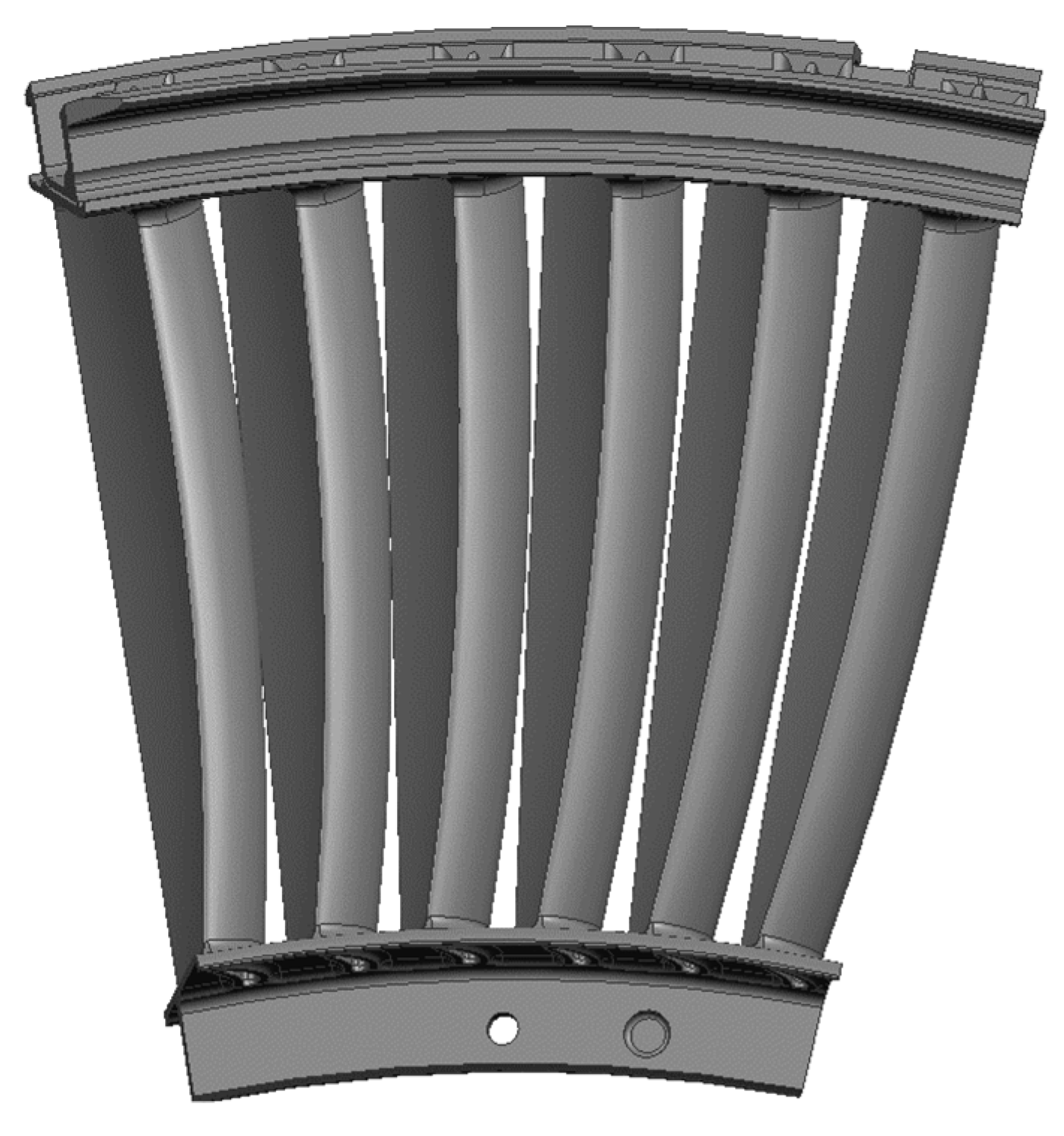
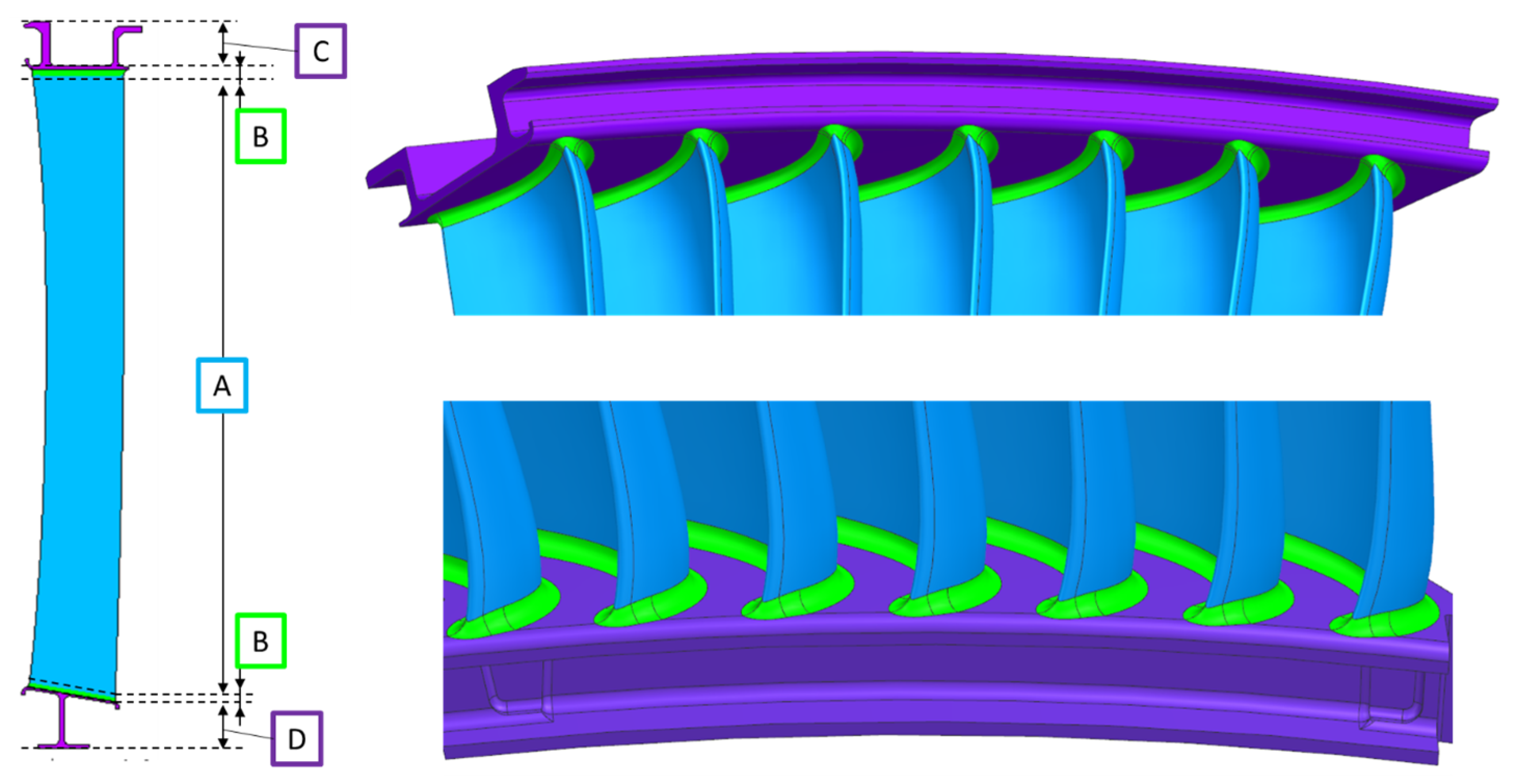
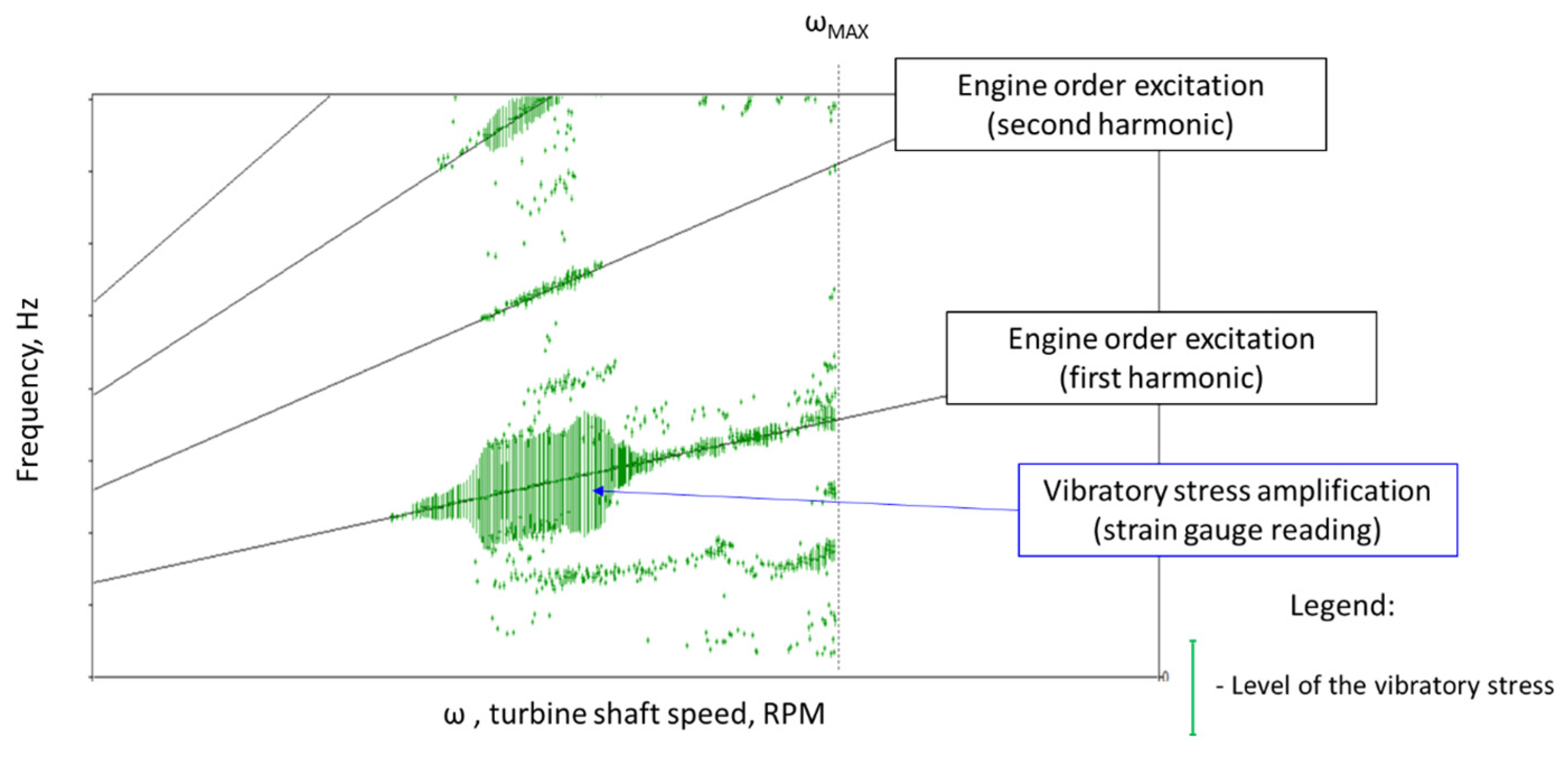
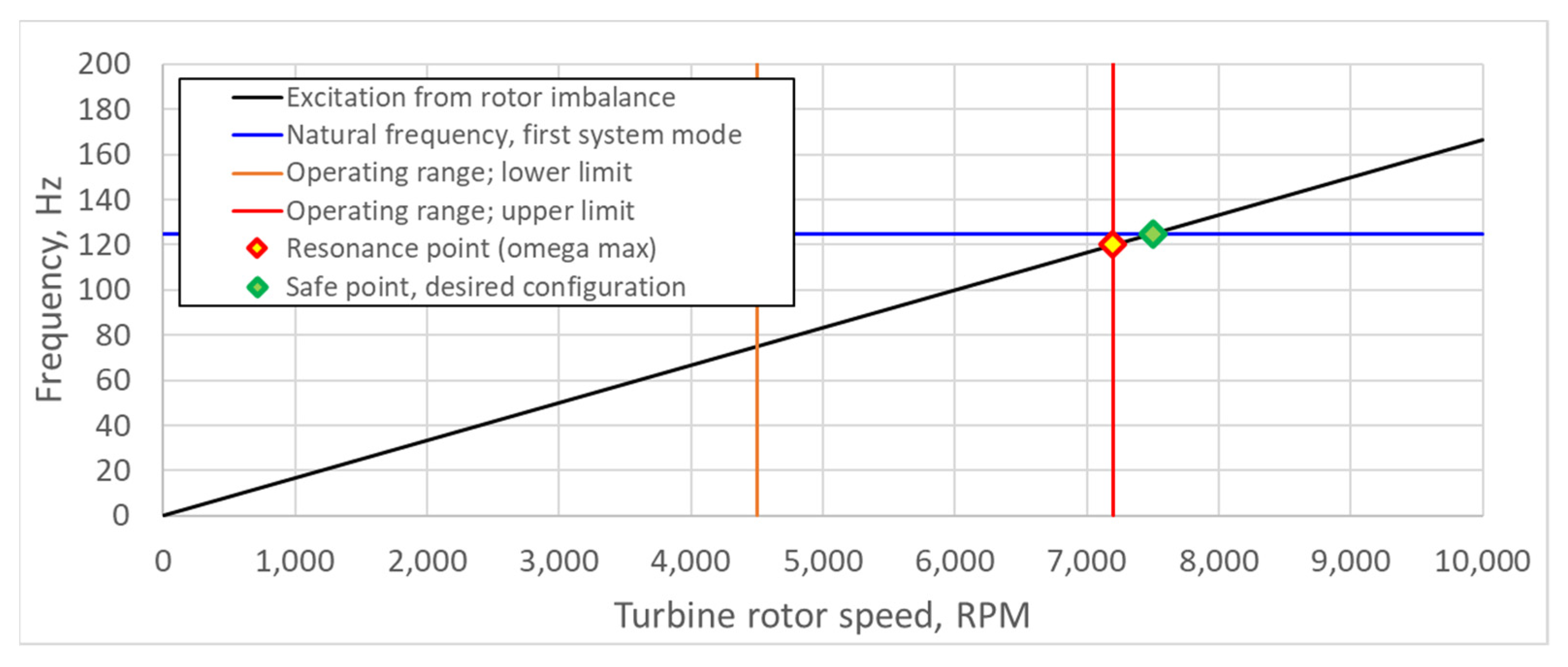
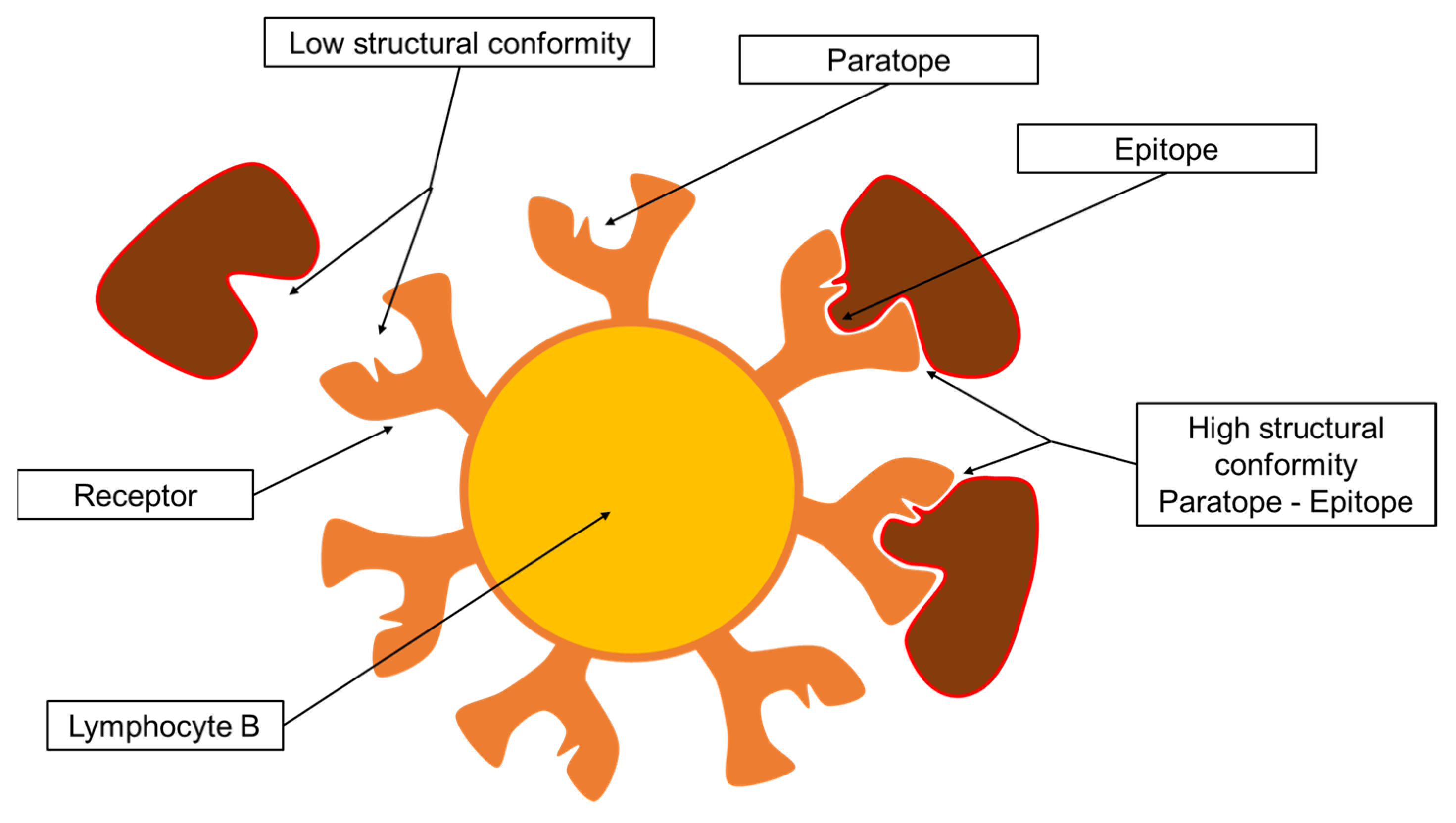
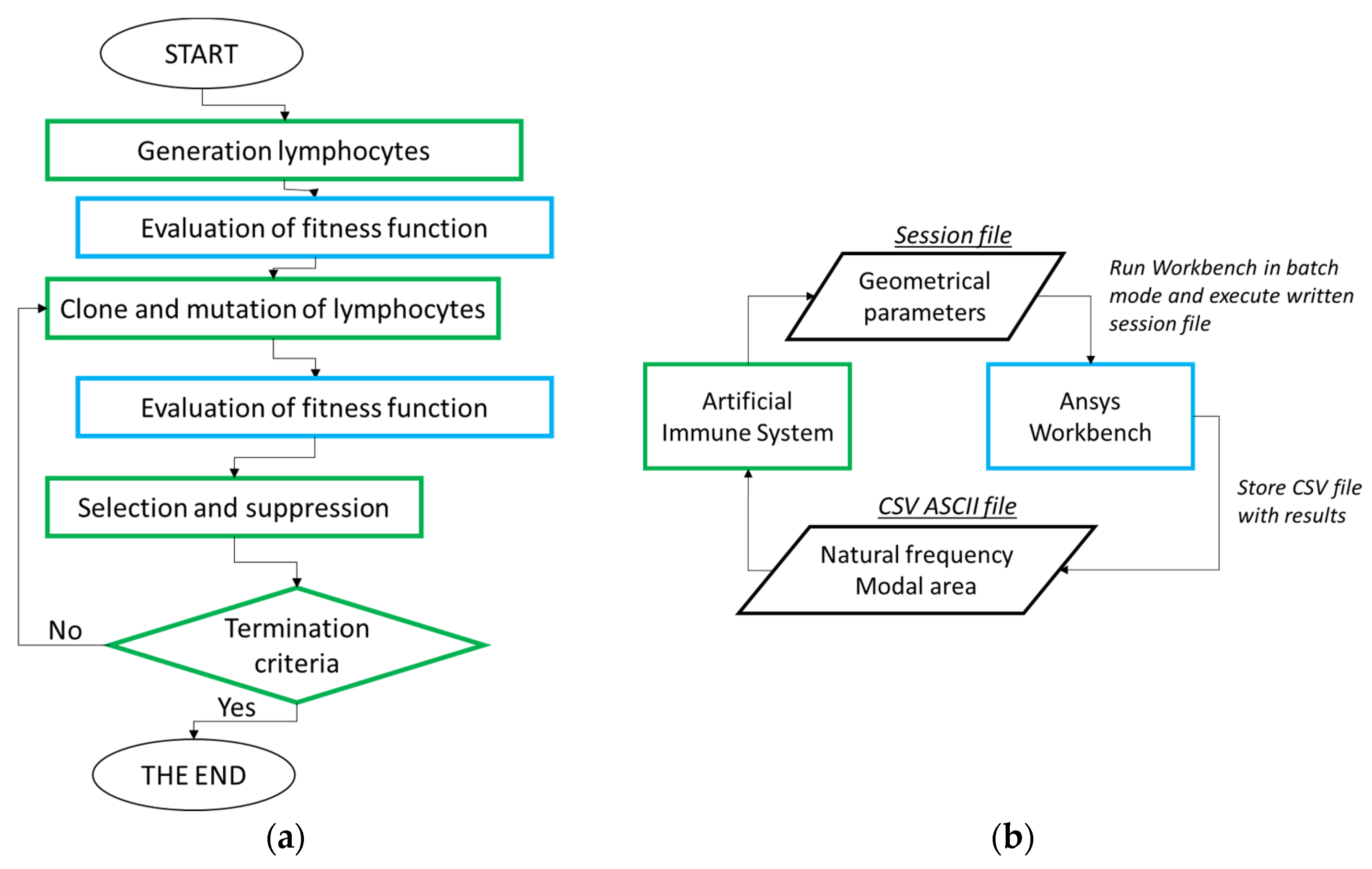


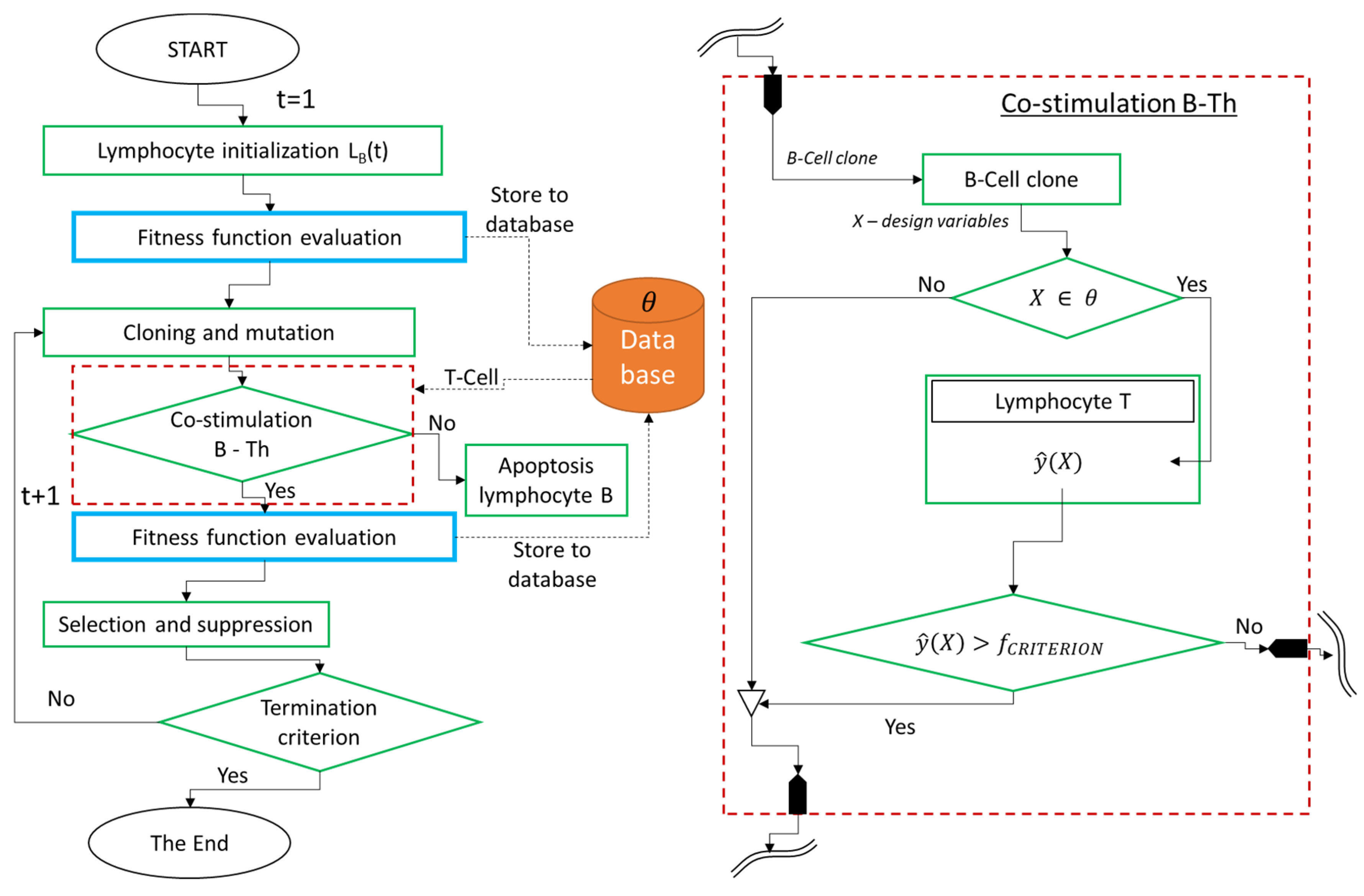
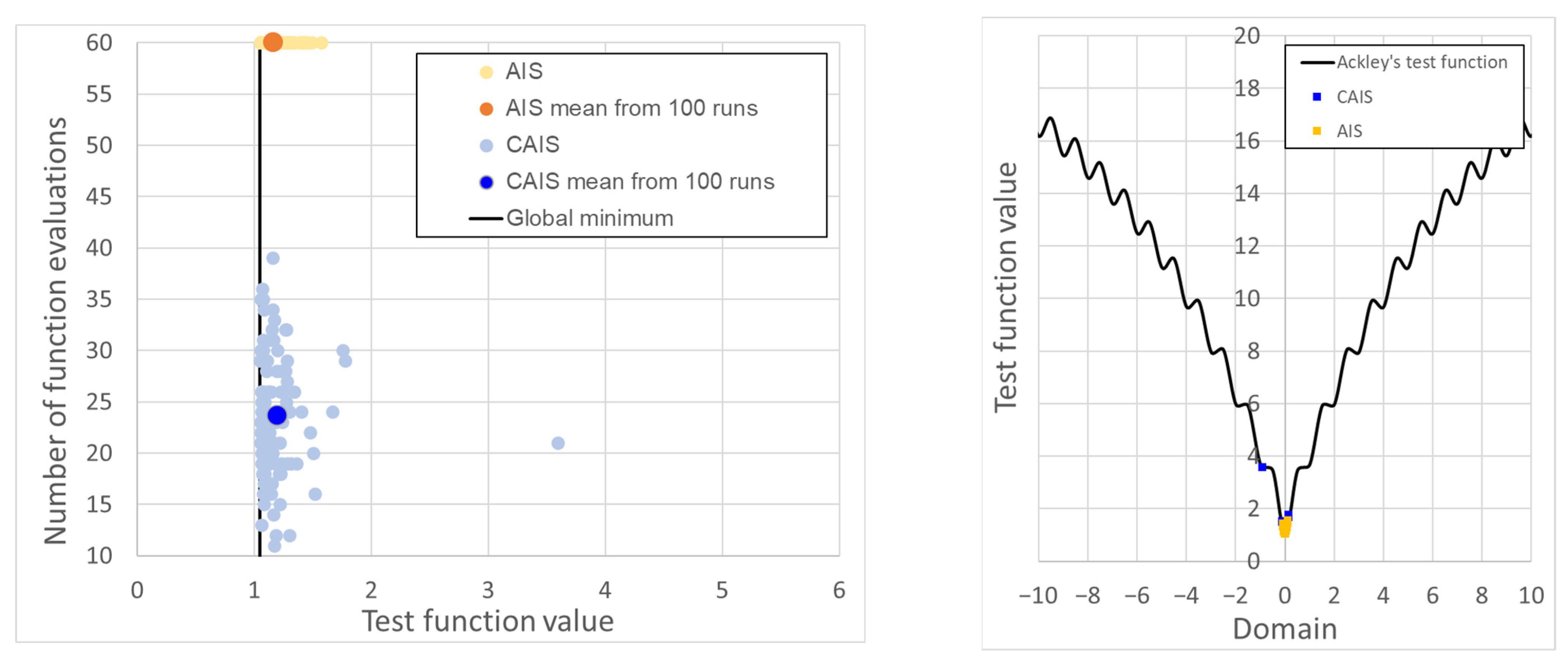

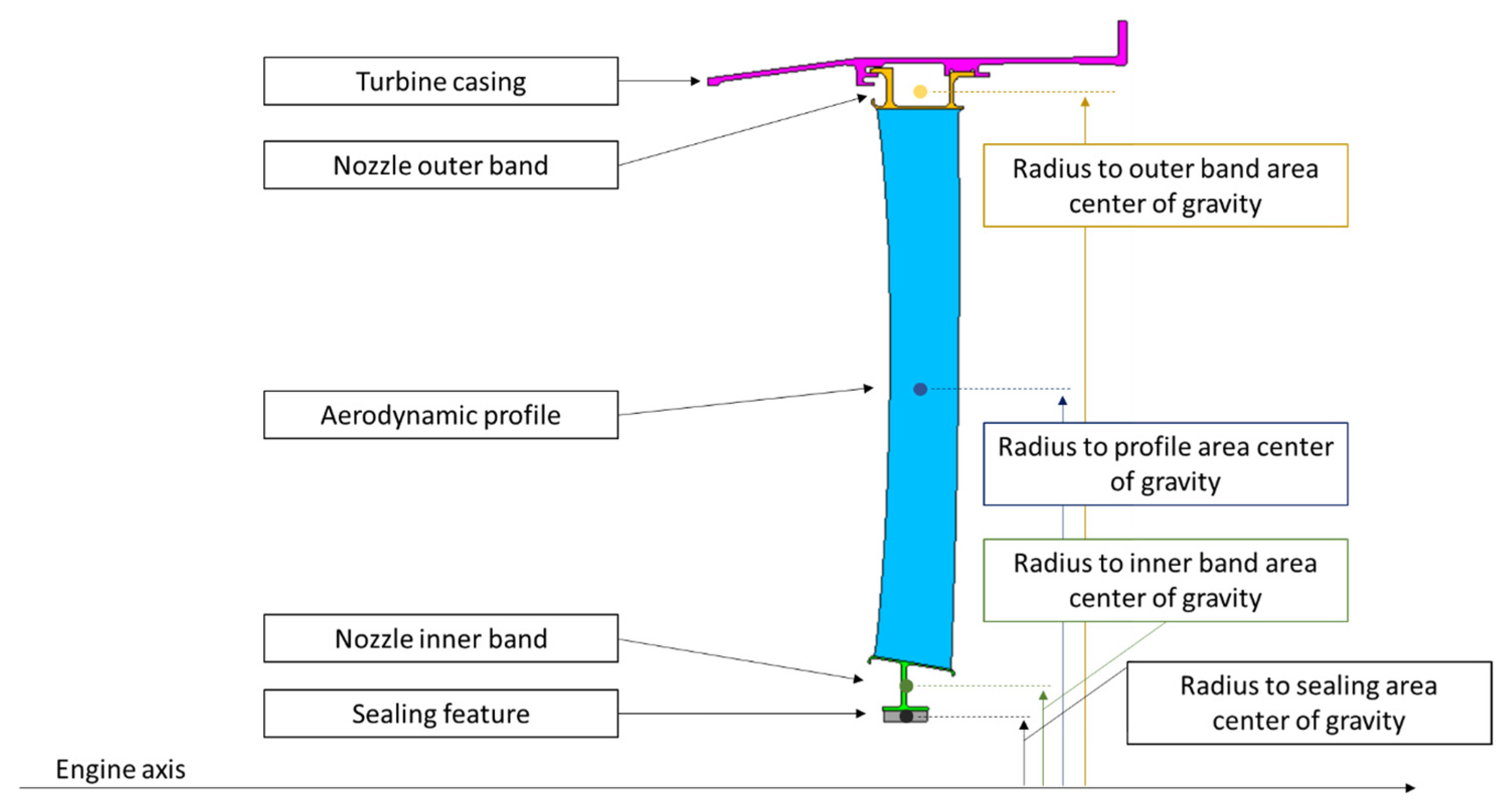
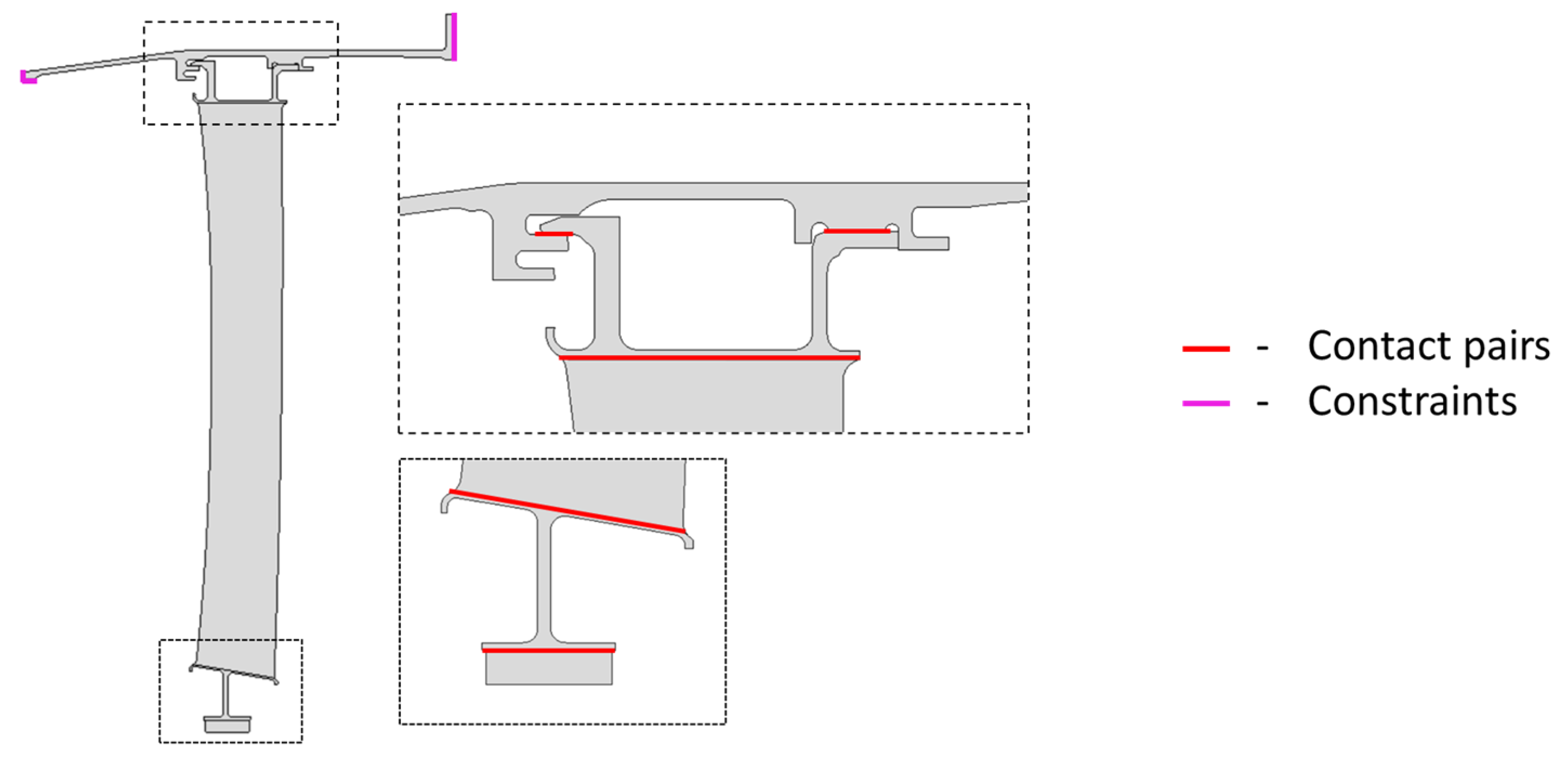
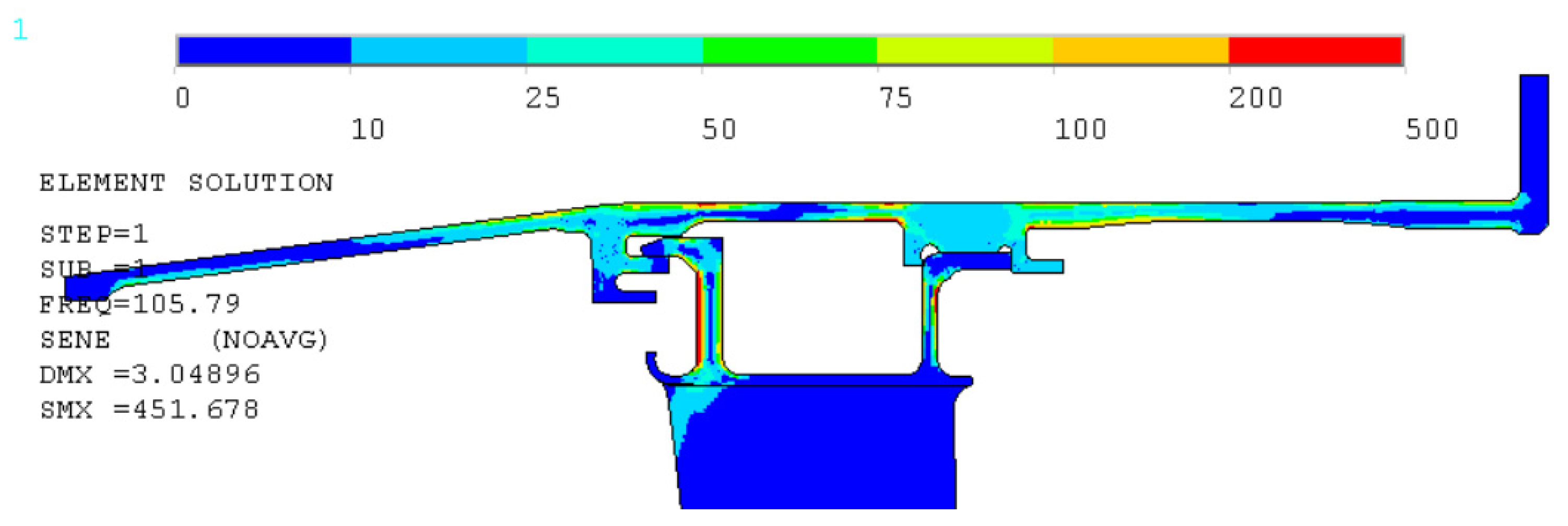
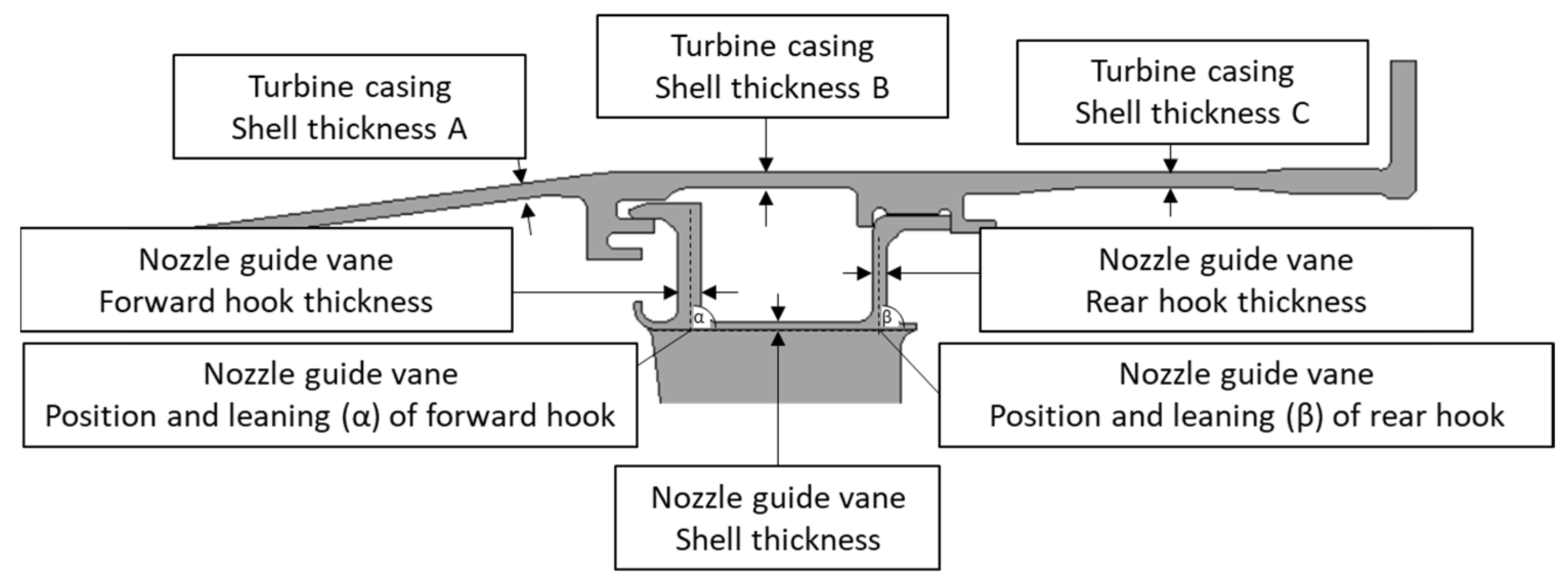


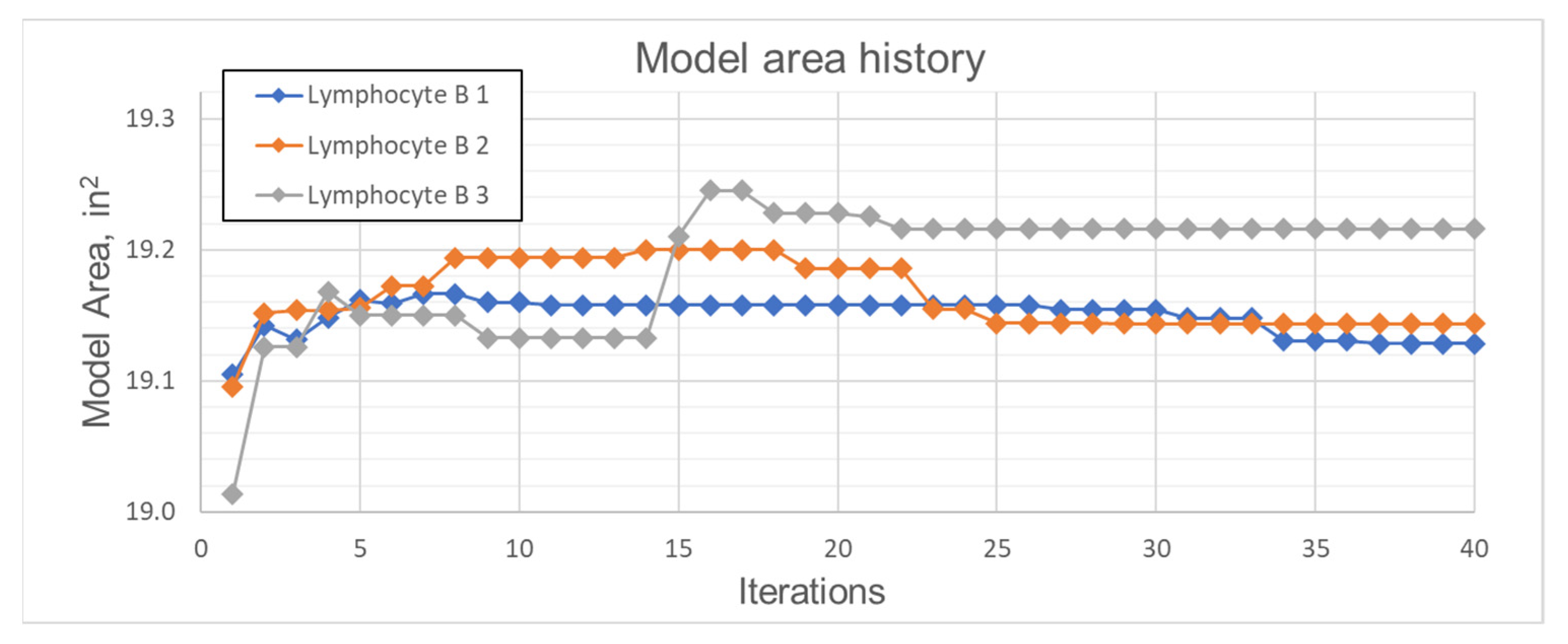
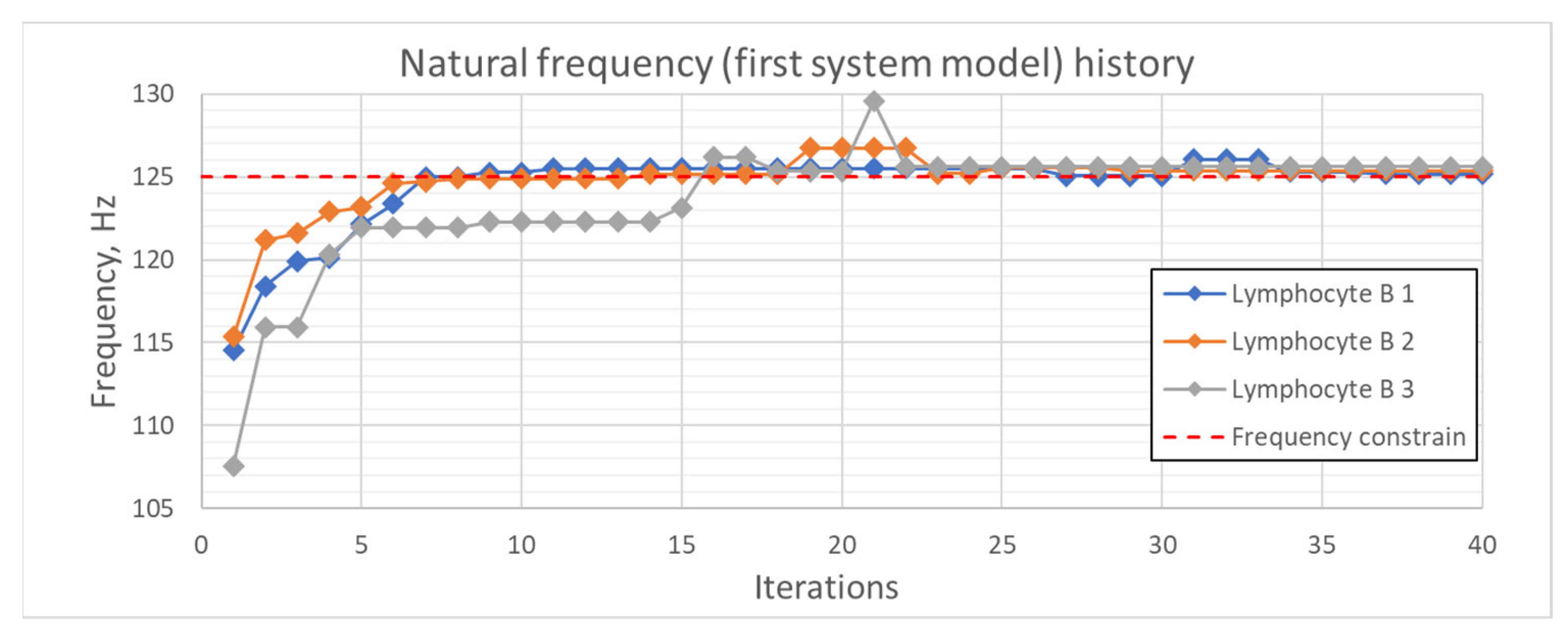
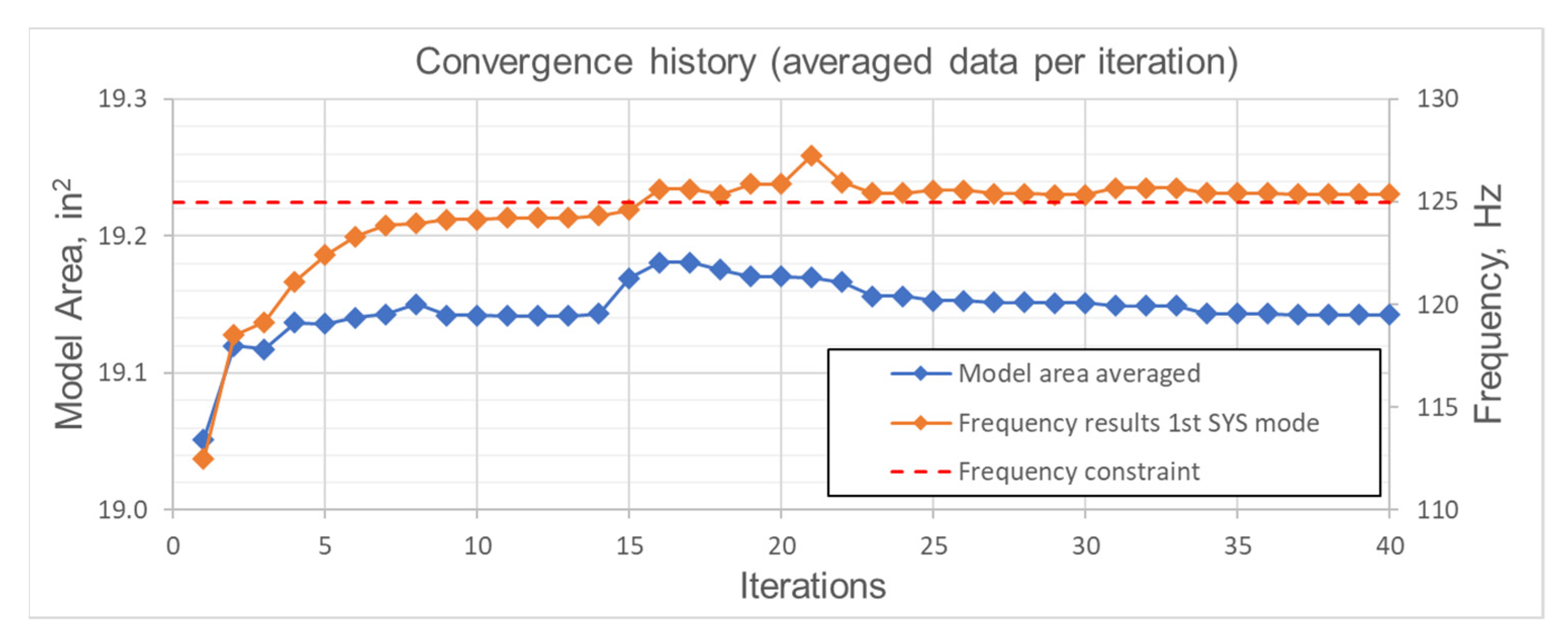
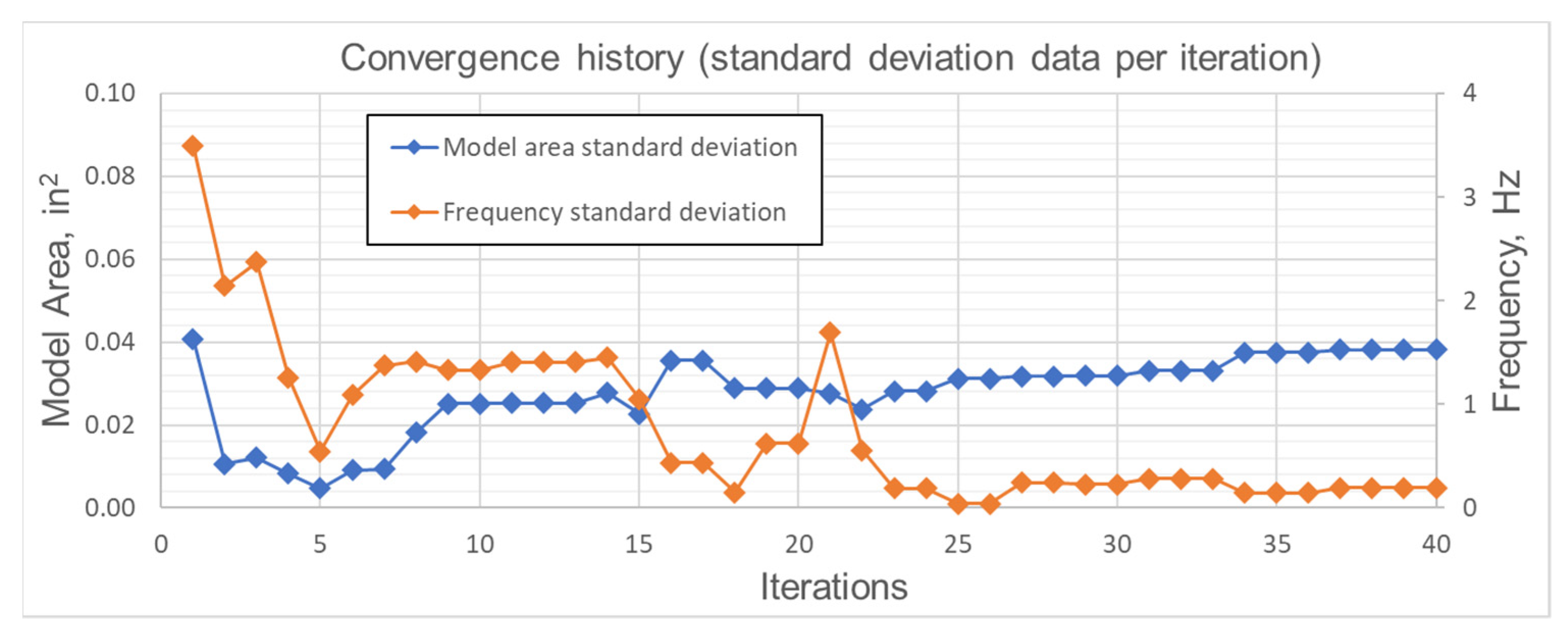
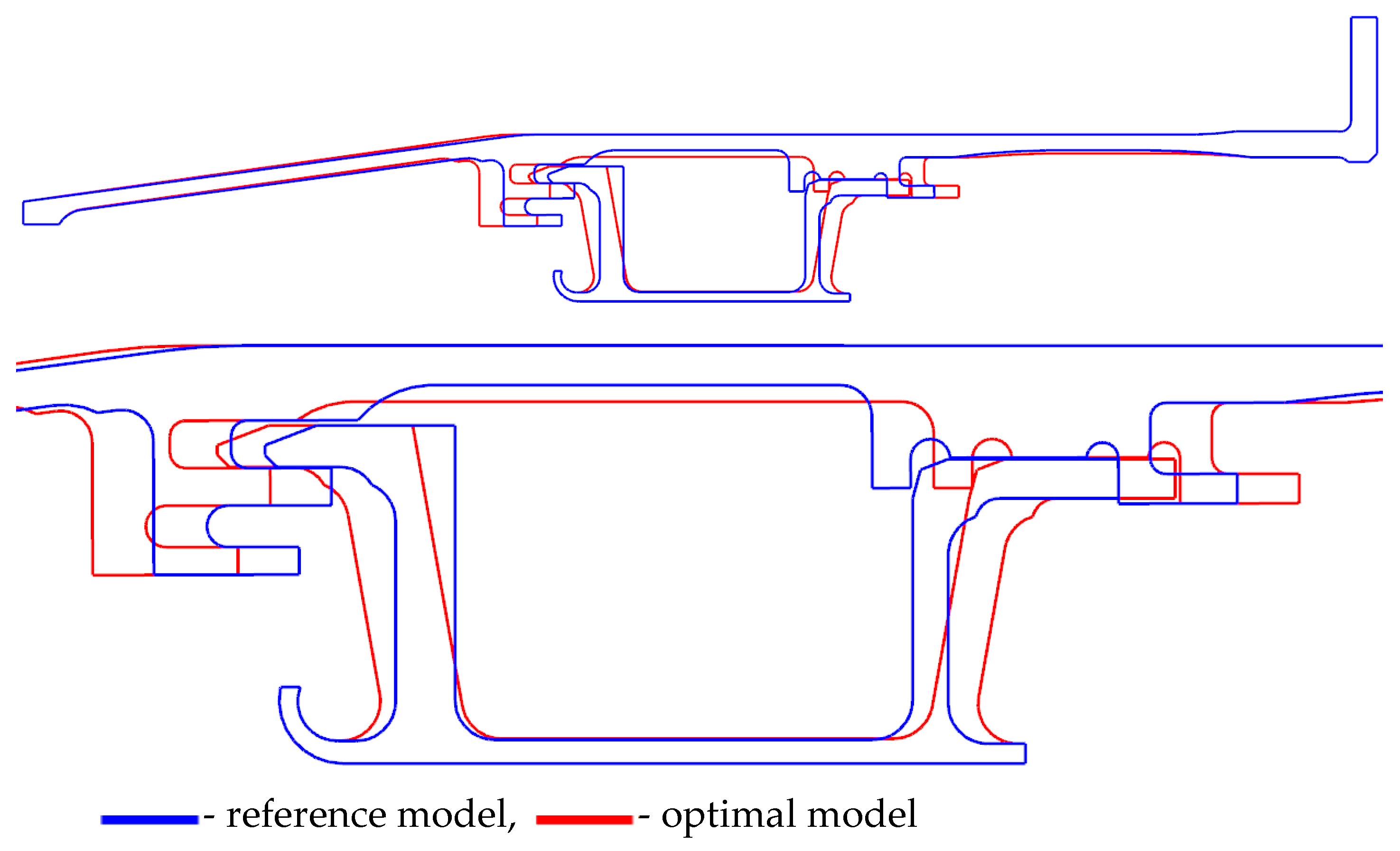
| Parameter | Value |
|---|---|
| Frequency of T-cell refresh, fitness function evaluations | 20 |
| T-cell margin for criterion O1 | 5% |
| Parameter | Value |
|---|---|
| Memory cells | 3 |
| Clone number | 6 |
| Termination criteria—number of iterations | 10 |
| Mutation probability | 0.75 |
| Parameter | Lower Bound, in | Upper Bound, in |
|---|---|---|
| Casing shell A | 0.080 | 0.120 |
| Casing shell B | 0.080 | 0.180 |
| Casing shell C | 0.080 | 0.120 |
| Forward hook thickness | 0.100 | 0.200 |
| Rear hook thickness | 0.090 | 0.120 |
| Nozzle shell thickness | 0.060 | 0.120 |
| Forward hook position | −0.040 | 0.040 |
| Rear hook position | −0.050 | 0.050 |
| Parameter | Lower Bound, deg. | Upper Bound, deg. |
|---|---|---|
| Forward hook leaning | 80 | 100 |
| Rear hook leaning | 80 | 100 |
| Parameter | Value |
|---|---|
| Lymphocyte number (memory cells) | 3 |
| Clone number | 6 |
| Termination criteria, iteration quantity | 40 |
| Probability of mutation | 0.75 |
| Number of design variables | 10 |
| Parameter Name | Genetic Algorithm (GA) | Artificial Immune System (AIS) | Costimulated Artificial Immune System (CAIS) |
|---|---|---|---|
| Casing shell A [in] | 0.110 | 0.099 | 0.098 |
| Casing shell B [in] | 0.165 | 0.142 | 0.150 |
| Casing shell C [in] | 0.111 | 0.120 | 0.120 |
| Forward hook thickness [in] | 0.183 | 0.200 | 0.200 |
| Rear hook thickness [in] | 0.107 | 0.111 | 0.111 |
| Forward hook leaning [°] | 92.1 | 100.0 | 96.4 |
| Rear hook leaning [°] | 82.3 | 80.0 | 82.8 |
| Nozzle shell thickness [in] | 0.083 | 0.063 | 0.061 |
| Forward hook position [in] | 0.036 | 0.040 | 0.040 |
| Rear hook position [in] | −0.048 | −0.050 | −0.050 |
| Genetic Algorithm (GA) | Artificial Immune System (AIS) | Costimulated Artificial Immune System (CAIS) | |
|---|---|---|---|
| Number of fitness function evaluations | 1374 | 443 | 380 |
| Model area, in2 | 19.163 | 19.109 | 19.114 |
| Natural frequency | 125.0 | 125.1 | 125.0 |
Disclaimer/Publisher’s Note: The statements, opinions and data contained in all publications are solely those of the individual author(s) and contributor(s) and not of MDPI and/or the editor(s). MDPI and/or the editor(s) disclaim responsibility for any injury to people or property resulting from any ideas, methods, instructions or products referred to in the content. |
© 2024 by the authors. Licensee MDPI, Basel, Switzerland. This article is an open access article distributed under the terms and conditions of the Creative Commons Attribution (CC BY) license (https://creativecommons.org/licenses/by/4.0/).
Share and Cite
Robak, R.; Szczepanik, M.; Rulik, S. Parametric Optimization of System Modes for Nozzle Turbine Vane by Means of Costimulated Artificial Immune System. Appl. Sci. 2024, 14, 3991. https://doi.org/10.3390/app14103991
Robak R, Szczepanik M, Rulik S. Parametric Optimization of System Modes for Nozzle Turbine Vane by Means of Costimulated Artificial Immune System. Applied Sciences. 2024; 14(10):3991. https://doi.org/10.3390/app14103991
Chicago/Turabian StyleRobak, Rafał, Mirosław Szczepanik, and Sebastian Rulik. 2024. "Parametric Optimization of System Modes for Nozzle Turbine Vane by Means of Costimulated Artificial Immune System" Applied Sciences 14, no. 10: 3991. https://doi.org/10.3390/app14103991
APA StyleRobak, R., Szczepanik, M., & Rulik, S. (2024). Parametric Optimization of System Modes for Nozzle Turbine Vane by Means of Costimulated Artificial Immune System. Applied Sciences, 14(10), 3991. https://doi.org/10.3390/app14103991







